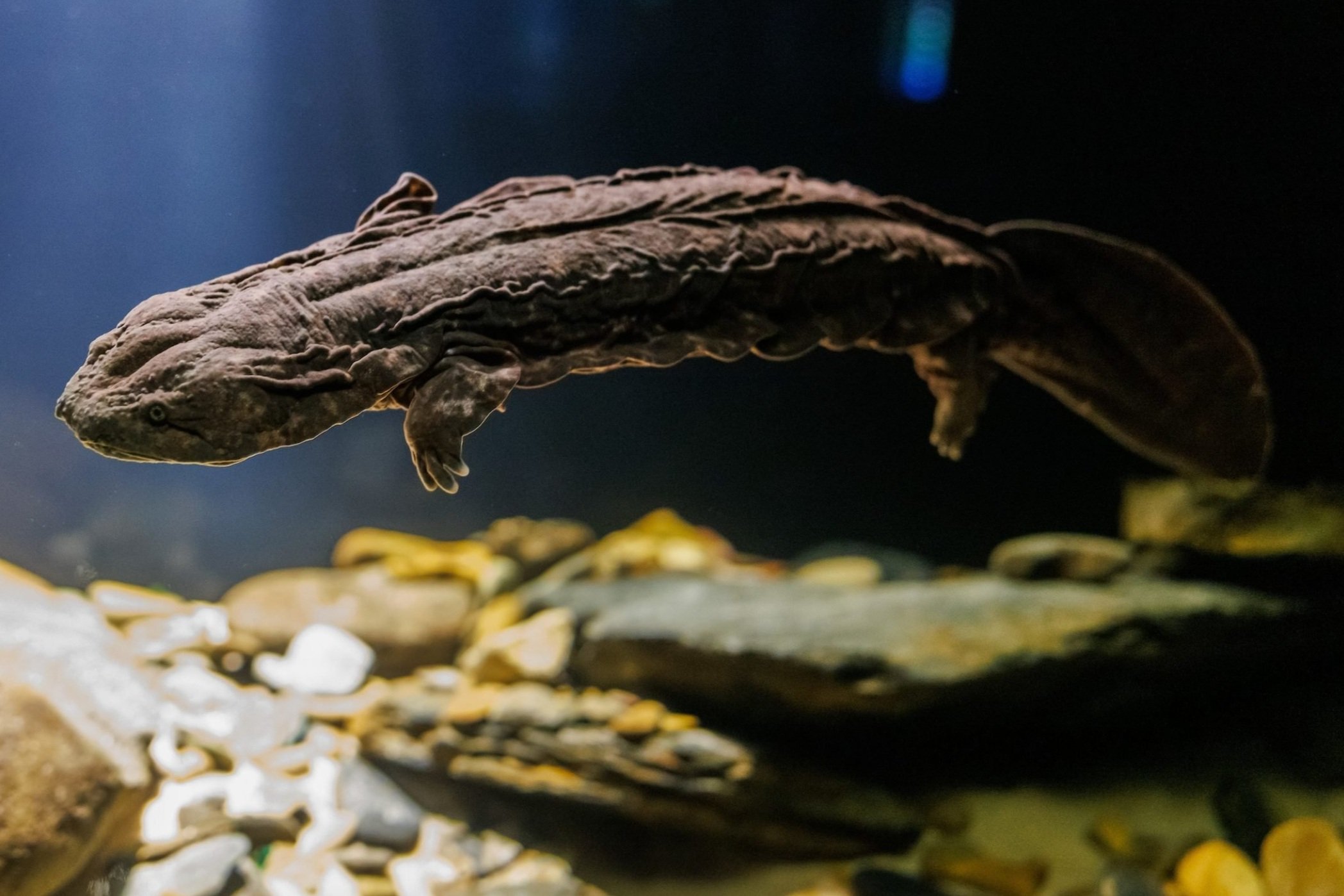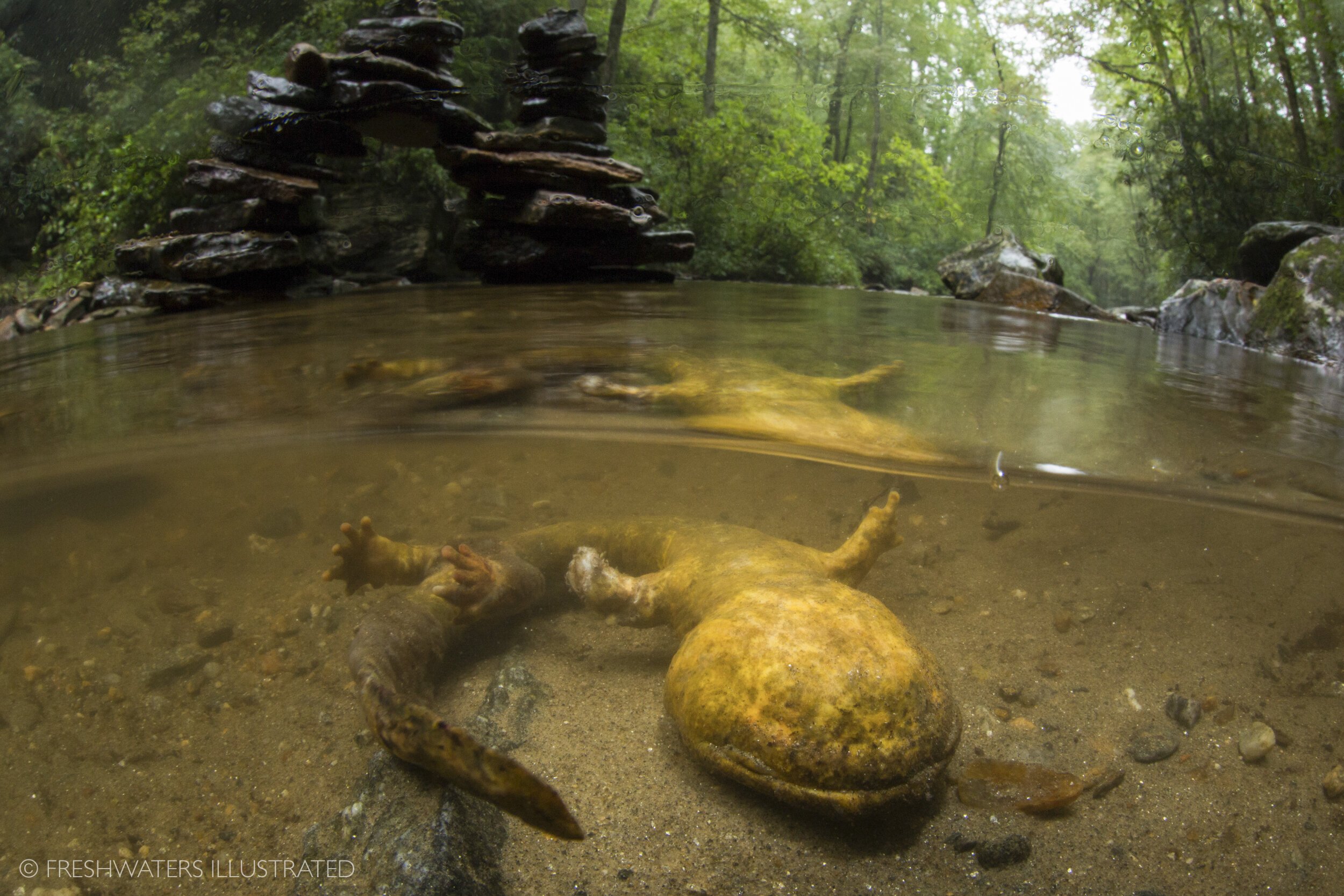
The Eastern Hellbender Salamander
What’s in a name?. . . . That question was penned by Shakespeare for his famous star-crossed lovers, adding, That which we call a rose by any other name would smell just as sweet.
But what if we apply that question not to a flower but an amphibian? Specifically, we’re talking a hellbender—an Eastern Hellbender, to be exact, a little-known creature endemic to America, a salamander that can grow up to two feet in length, which is as big as it gets for a salamander in the United States.
This salamander is also our eponymous hero, the one mascot we’ve chosen after which to name the Hellbender Gathering of Poets. . . . So what’s in that name? And why name our poetry festival after these slimy, elusive critters?
Well, if you’re from the mountains here in Western North Carolina, chances are you’ve heard the hellbender called by many other names—Appalachians do, after all, speak a lively tongue. Snot otters, you might have heard. Or devil dogs. Grampus. Maybe even mudpuppies.
But the story behind their name goes like this: They look like something fresh outta hell, damn well bent on returning. And return they must—but not to hell, no. They must return to their rightful place, which is right here, in the mountains we call home.
A perfect display of just how the Hellbender got their bendy name.
But out of all the nicknames for them, here’s one that breaks our heart—the last dragons, they’re called, because tease all you want, hellbenders are just that—our last dragons. Though they look otherworldly, they are very much of this world—they’ve been around at least 150 million years, which if you do the math, was three mass extinctions ago. . . . Or four, if you count the one we’re living through now.
Because yes, now, they—like many of the beings on this planet—are in deep trouble. You see, hellbenders are proverbial coal-mine canaries, or in scientific terminology, they’re indicator species, serving as a measure of environmental conditions in a given area.
Say, for example, mountain waters are polluted. This means hellbenders die. Or if intense rains widen their waterways or erode the banks? This generally means hellbenders die. Or if overly enthusiastic tourists move rocks in a stream bed to create artful little cairns? Well, you get it: hellbenders, who make their homes under those rocks, pay the price with their lives. And these problems are now compounded with human population growth, agricultural run-off, soil pollution, and the climate crisis.
As an indicator species, the demise of hellbenders such as this one act as a canary in a coal mine might.
Like all living beings, the hellbender is part of a system, and that system is breaking down.
So, yes, there are fewer and fewer hellbenders with every passing season. They are in deep trouble, and they’re signaling to us that everything around them is in deep trouble, too. You know this, and we know this. Friends, we are all in deep trouble.
No doubt, we are mourning the rivers, mourning the land, wondering how much more we will lose.
But despair won’t get us anywhere. We have to redefine hope not as a feeling but as a verb, or as Rebecca Solnit said in her book, Hope in the Dark, “Hope is not a lottery ticket you can sit on the sofa and clutch, feeling lucky. It is an axe you break down doors with in an emergency. Hope should shove you out the door, because it will take everything you have to steer the future away from endless war, from the annihilation of the earth’s treasures and the grinding down of the poor and marginal. . . . To hope is to give yourself to the future—and that commitment to the future is what makes the present inhabitable.”
Thus the name gives voice to those who cherish this earth and are determined to give hope muscle and verve.
We call ourselves the Hellbender Gathering of Poets because we believe hope is power. As Margaret Atwood wrote, “a word after a word / after a word is power,” and we trust in the transformative power of poetry to rise up during the most challenging times and aim to nurture those who seek the poems that do this most necessary work.
Salamander images are from the film and conservation project The Last Dragon: Protecting Appalachian’s Hellbenders


